Art, as an eternal reflection of human consciousness, unfolds itself in myriad forms. Among these, self portraits have been a genre spanning across centuries. They represent artists’ deep introspection. These self portraits serve as expressions of their inner thoughts and emotions. In this blog post, we will delve into the brushwork of ten famous self portraits, each offering a glimpse into the artist’s soul and unveiling narratives that transcend the boundaries of time.
1. Vincent van Gogh-“Self Portrait with Bandaged Ear”

| Completed Year | 1889 |
| Dimensions | 60 cm × 49 cm |
| Location | Courtauld Gallery, London |
Vincent van Gogh’s “Self Portrait with Bandaged Ear” is a testament to the artist’s turbulent inner world, during the year 1889. This masterpiece resonates with van Gogh’s intensity that echoes through the canvas. The poignant inclusion of his ear resulting from self-inflicted wounds not only symbolizes his personal struggles but also metaphorically represents the profound emotional anguish that fueled his artistic expression.
2. Leonardo da Vinci-“Self Portrait in Red Chalk”

| Completion Year | Around 1512 |
| Dimensions | 33.3 cm × 21.6 cm |
| Location | Biblioteca Reale, Turin |
Leonardo da Vinci, the epitome of a Renaissance man has left us with one of the famous self portrait that’s as captivating as the artist himself. The “Self Portrait in Red Chalk ” believed to have been created around 1512 showcases da Vinci’s attention to detail. His piercing gaze invites viewers to delve into the mind behind his genius. The use of chalk as a medium for him adds an air of intrigue, urging us to uncover the hidden depths of this multifaceted individual.
3. Frida Kahlo -“The Two Fridas”

| Completion Year | 1939 |
| Dimensions | 173.5 cm × 173 cm |
| Location | Museo de Arte Moderno, Mexico City |
Frida Kahlo’s masterpiece “The Two Fridas” delves into the realms of surrealism. It explores themes of identity and duality. The two Fridas, one holding a portrait of Diego Rivera, reflect the artist’s emotional turmoil and the complex dynamics of her relationships. The stormy backdrop and visible heart wounds serve as metaphors for the turbulence she endured. Kahlo’s art immortalizes her struggles serving as a channel for shared human experiences.
4. Rembrandt van Rijn – “Self Portrait with Two Circles”
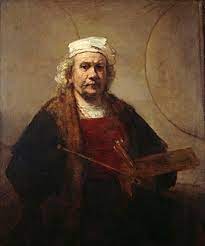
| Completion Year | 1665-1669 |
| Dimensions | 114.3 cm × 94 cm |
| Location | Kenwood House, London |
Rembrandt van Rijn “Self Portrait with Two Circles” is an example of chiaroscuro technique showcasing the artist’s ability to manipulate light and shadow. Painted between 1665 and 1669, this self portrait captures Rembrandt’s expression as he grapples with the complexities of his existence. The presence of two circles potentially symbolizing his nature as an artist and an individual adds layers of meaning to this artwork. The interplay of shadows on his brow invites viewers to delve into the depths of his thoughts.
5. Pablo Picasso – “Self Portrait with Palette”
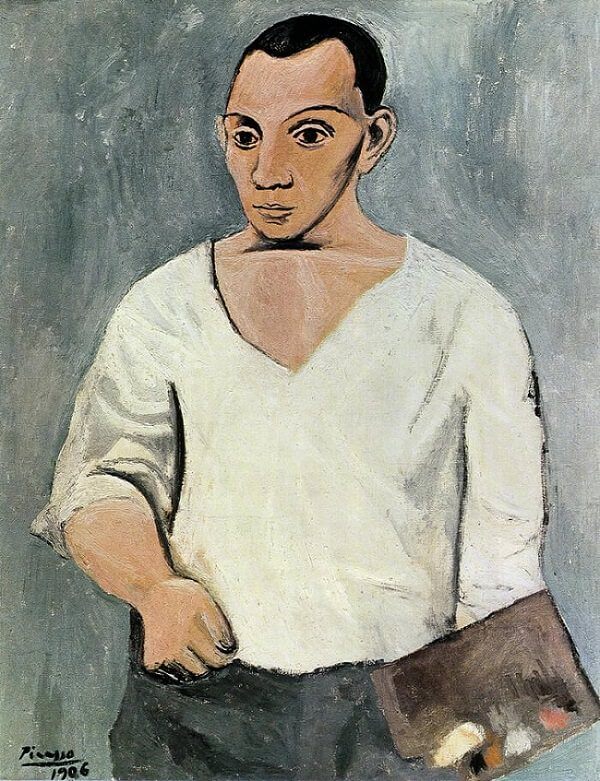
| Completion Year | 1906 |
| Dimensions | 81 cm × 60.5 cm |
| Location | National Gallery, Washington D.C. |
Pablo Picasso’s “Self Portrait with Palette” from 1906 exemplifies the artist’s evolving style during his years.
The bold and vibrant use of color, along with the composition gives us a glimpse into Picasso’s contributions to modern art. It allows us to peek into the mind of a revolutionary. The confident posture and the direct gaze that meets the viewer’s eye not only portray an artist at work but also reveal a visionary who is reshaping the art world itself.
6. Frida Kahlo – “Self Portrait with Thorn Necklace and Hummingbird”
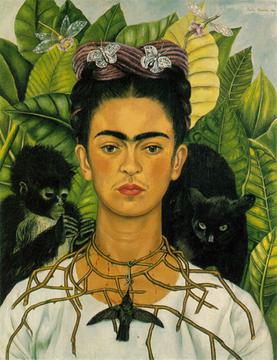
| Completion Year | 1940 |
| Dimensions | 61 cm × 47 cm |
| Location | Harry Ransom Center, Austin, Texas |
Frida Kahlo’s “Self Portrait with Thorn Necklace and Hummingbird” is a representation of pain and resilience. Kahlo incorporates symbolism like the thorn necklace and hummingbird to convey the intricacies of her emotional struggles. The thorns piercing her neck symbolize the challenges she encountered while the hummingbird—a symbol of life and freedom—embodies her spirit in the face of adversity.
7. Caravaggio – “Self Portrait as Bacchus”

| Completion Year | 1593 |
| Dimensions | 66 cm × 51 cm |
| Location | Uffizi Gallery, Florence |
Caravaggio’s “Self Portrait as Bacchus” gives us a glimpse into the personality of this Baroque master. Caravaggio’s painting blurs the boundaries between reality and mythology by portraying himself as Bacchus, the god of wine. This artwork showcases Caravaggio’s brilliance while also reflecting the nature of his life. The captivating gaze and dramatic interplay of light and shadow capture the essence of Caravaggio’s style characterized by contrasts and contradictions.
8. Élisabeth Louise Vigée Le Brun – “Self-Portrait with Her Daughter, Julie”

| Completion Year | 1789 |
| Dimensions | 130 cm × 94 cm |
| Location | Louvre Museum, Paris |
This painting beautifully captures the tender bond between mother and child while also highlighting Vigée Le Bruns talent as one of the successful women painters during the 18th century. In an art world predominantly dominated by men she not only celebrates connections but also challenges societal norms through this revolutionary act.
9. Diego Velázquez – “Las Meninas”
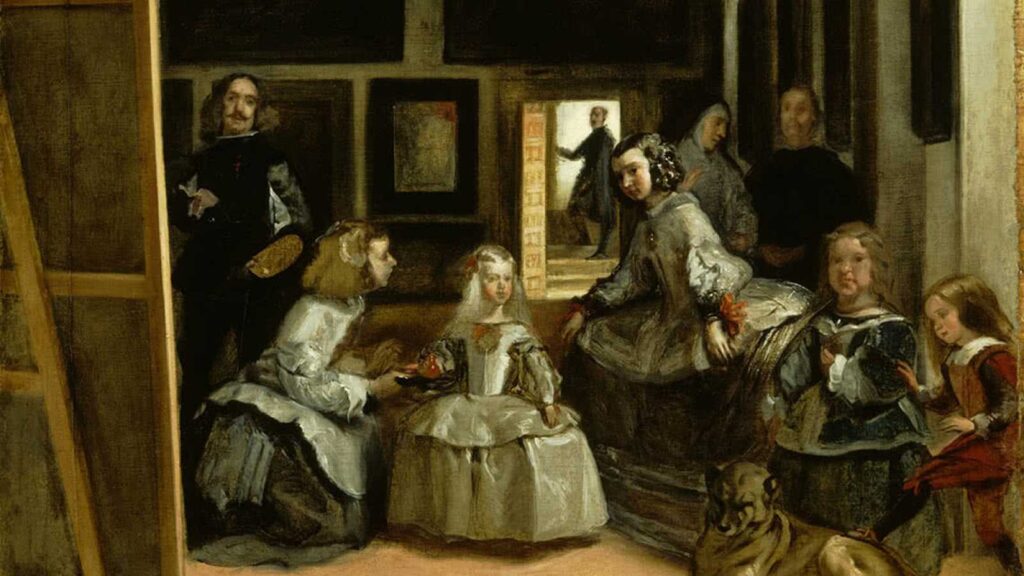
| Completion Year | 1656 |
| Dimensions | 318 cm × 276 cm |
| Location | Museo del Prado, Madrid |
This artwork captures Velázquez himself as he depicts the family. By including the artist in a scene dominated by royalty, the painting emphasizes the significance of painters. This artwork makes a profound statement about arts power and the artist’s role in society.
10. Andy Warhol – “Self-Portrait”
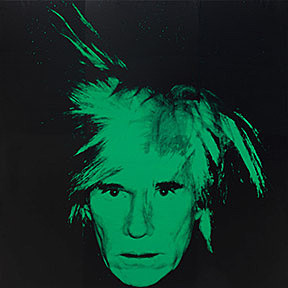
| Completion Year | 1986 |
| Dimensions | 22.9 cm × 22.9 cm |
| Location | The Andy Warhol Museum, Pittsburgh |
This piece was completed in 1986. It can be found at The Andy Warhol Museum in Pittsburgh. As a figure of the Pop Art movement, Warhol created this self portrait that embodies his style. Through imagery and vibrant colors, Warhol captures his fascination with production and celebrity culture offering insights into his innovative approach to modern art. The deliberate repetition not only reflects Warhol’s persona but it also serves as a commentary on mass media culture, which he both embraced and critiqued.
Frequently Asked Questions
Which artist is known for self-portraits?
Van Gogh and “self-portrait” are essentially synonymous phrases. Over thirty self-portraits were painted by the Dutch artist throughout a three-year period. He is one of the most prolific self-portrait artists of all time based on the number of self-portraits he has created.
Who is best known for her self-portraits?
Mexican painter Frida Kahlo is most renowned for her unflinching and vividly coloured self-portraits that explore themes like identity, the human body, and death.
What is Picasso’s most famous self-portrait?
Guernica is not just Picasso’s most well-known artwork, but it is also one of the most well-known and powerful antiwar messages ever made. It was inspired by the terrible 1937 bombing of the Basque city of Guernica during the Spanish Civil War.
Conclusion
Within the realm of self portraiture, these ten famous self portraits serve as demonstrations of the artist’s skill in transforming introspection into artistic expression. Every brushstroke unveils a narrative by not only capturing the attributes of the artists but also delving into their emotions, challenges and victories. Through these famous self portraits, we forge a connection with these artists across generations and continents attaining insights into the nature of humanity and creativity.












